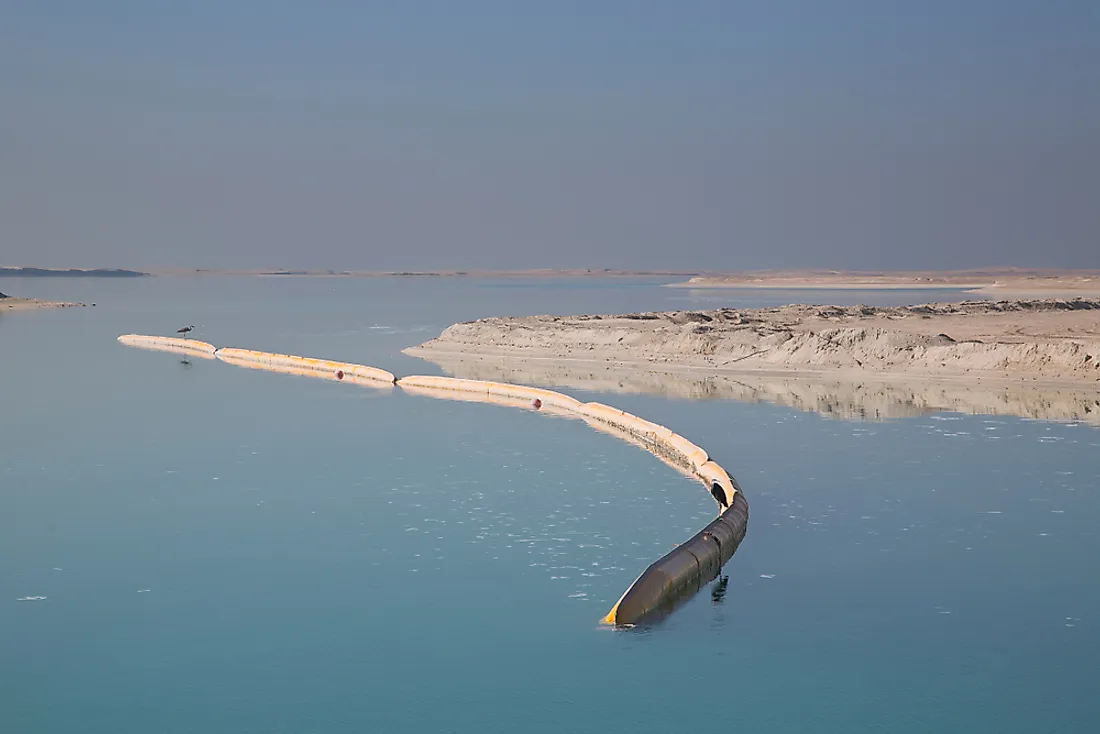What Is Land Reclamation?

Land reclamation refers to the process of creating or restoring new land from waterlogged areas, lakebeds or oceans. The new land, also known as landfills, makes the land more useful for activities such as farming, forestry, port expansion, beach replenishment or construction of commercial complexes. The reclaimed ground is filled with sand, soil or other materials depending on the intended use. The process involves pumping out water from swampy muddy places or raising the elevation of the ocean bed by different processes.
Methods Of Land Reclamation
Land reclamation method depends on factors such as types of equipment available, type of coastal soil or sand, the topography of the ocean bed or even intended use of the reclaimed land. Land reclamation can occur by either the process of poldering or by raising the level of a seabed or a low lying field. Globally the simplest method is called infilling where the target region is filled with numerous heavy rocks. Clay, dirt or soil is then filled into the desired height. The second method is by draining wetlands mechanically. Machines are used to pump out water from marshes and the land reclaimed is enclosed by dikes. Deep cement mixing method is applicable where the target area contains harmful or contaminated matter that ought to be contained. The other method is by land dredging whereby sediments plus debris are eliminated from the bottom of a water body. The method is used to fill in harbors and channels. The hydraulic method is whereby fill material is gotten from an offshore borrow source. The fill should be granular fill due to its good drainage nature.
Requirements For Reclamation
The process requires not only extensive planning but also elaborate resources.Resources have to be invested in identifying viable fill at a barrow region, choosing the most appropriate equipment, site investigation and then collecting all the hydrographic data. The authority involved must conduct a cost-benefit analysis as well as environmental impact assessment of the project. Input from all stakeholders including the general public is crucial to the final outcome.
Benefits Of Land Reclamation
With the increase of people globally, land reclamation is essential. Population increase will lead to demand for more housing units, a bigger seaport, and agricultural land. Natural factors such as floods and storms make it necessary to perform reclamation acts to mitigate them. The process is useful in that it has assisted restore islands like in the Maldives or to create artificial islands
Examples Of Reclaimed Land
The Netherlands has the largest reclaimed island in the world known as Flevopolder in Flevoland. The island was reclaimed in 1955 when the eastern region was drained and in 1968 when the southern region was reclaimed. The island is 970 square kilometers. The Netherlands have other lands with almost 17% (2,700 square miles) of the country reclaimed from the lakes, sea or swamps. South Korea had 38% (600 square miles) of its coastal wetlands converted into the dry land as at 2006. Singapore has also reclaimed a significant chunk of land from the sea more as well as Hong Kong which has built the Kai Tak Airport on reclaimed land. Other countries with vast reclaimed lands are China, South Korea, Japan, Monaco, France, America, and Bangladesh.
Dangers Of Land Reclamation
Land acquired through reclamation process is sometimes not safe in regions prone to earthquake. This is because such land is very susceptible to liquefaction. Any building or infrastructure on that land can be collapse easily. There is an increased danger of flooding especially on land drained from marshes which are always below the level of the surrounding. Subsidence may also occur due to soil compaction on landfills or if wetlands surrounded by levees were reclaimed to create polders.











